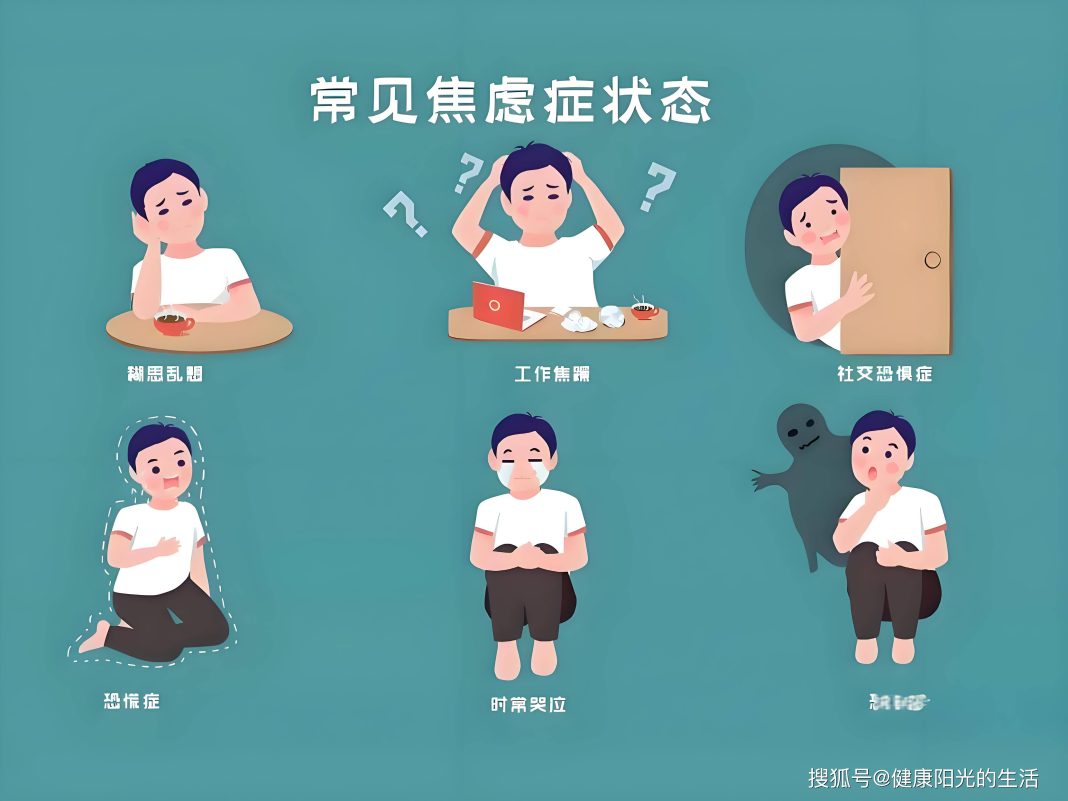In modern society, anxiety has almost become our “permanent emotion.” Whether it is work pressure, interpersonal relationships, or unexpected events in life, they can all make us feel anxious and uneasy. However, when anxiety becomes a persistent and inescapable burden, it may no longer be just a temporary emotional fluctuation but develops into a psychological disorder that needs attention—anxiety disorder.
Anxiety disorders are a group of mental disorders characterized by persistent and excessive anxiety. They are not merely ordinary tension or worry, but a serious illness that significantly affects daily life. Let us unveil the veil of anxiety disorders and understand their diverse manifestations.
1. Generalized Anxiety Disorder (GAD)
Generalized Anxiety Disorder, also known as “chronic anxiety,” is a type of anxiety disorder characterized by constant worry. This worry is often illogical or even unnecessary, but patients are unable to control this emotion. They may worry about various aspects such as work, health, financial status, and family relationships, even when these issues do not exist.
Patients with generalized anxiety disorder often feel as if they are in a state of “preparing for disaster,” finding it difficult to relax. The persistent tension leaves them exhausted. In addition, they may also experience physical symptoms such as insomnia, muscle tension, headaches, and gastrointestinal discomfort.
2. Social Anxiety Disorder (SAD)
Social Anxiety Disorder, also known as social phobia, is an anxiety disorder characterized by an extreme fear of social situations. People with social anxiety disorder typically feel very tense about interacting with others, fearing judgment, ridicule, or rejection.
This fear can manifest in various situations, such as speaking in public, participating in social events, or even communicating with colleagues at work. Patients often avoid social situations or feel extreme distress when they must participate. Long-term social avoidance not only affects their career development but also leads to a shrinking social network and heightened feelings of loneliness.
3. Panic Disorder
Panic disorder is characterized by recurrent episodes of intense fear and anxiety that come on suddenly and without obvious triggers. During a panic attack, patients may experience symptoms such as rapid heartbeat, shortness of breath, chest pain, dizziness, sweating, and even the feeling that they are about to die.
These symptoms typically peak within 10 to 20 minutes. Although the duration of the attacks is short, the fear they bring is often unbearable. Patients with panic disorder often restrict their activities out of fear of another attack, subsequently impacting various aspects of their lives.
4. Obsessive-Compulsive Disorder (OCD)
Obsessive-Compulsive Disorder is an anxiety disorder involving obsessive thoughts and compulsive behaviors. Patients often experience unwanted intrusive thoughts (i.e., obsessions), such as extreme fear of dirt or irrational worries about certain events occurring. To relieve these feelings of unease, they may engage in repetitive behaviors (i.e., compulsions), such as washing hands repeatedly, checking locks, or counting.
Although patients recognize that these thoughts and behaviors are unnecessary, they cannot control themselves. The repetitive compulsions lead to extreme distress, significantly impacting daily life and work efficiency.
5. Post-Traumatic Stress Disorder (PTSD)
Post-Traumatic Stress Disorder typically occurs after experiencing extremely traumatic events, such as war, natural disasters, serious accidents, or sexual assault. Patients may repeatedly re-experience the traumatic events, possibly through flashbacks or nightmares, feeling the terror associated with the trauma.
PTSD patients often avoid places, people, or activities related to the traumatic events and may exhibit symptoms of heightened vigilance, irritability, and emotional numbness. This state can persist for months or even years.


